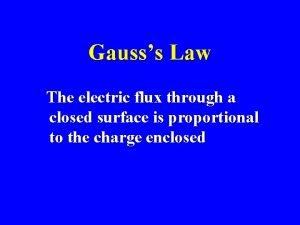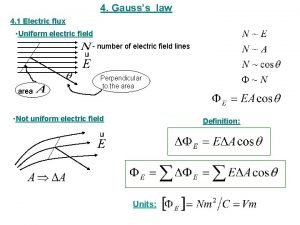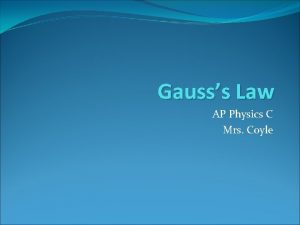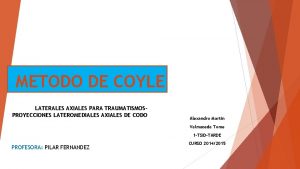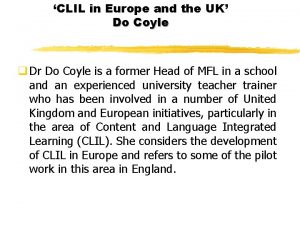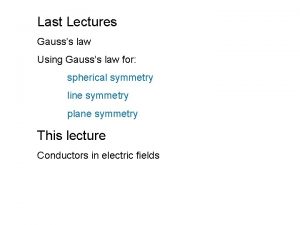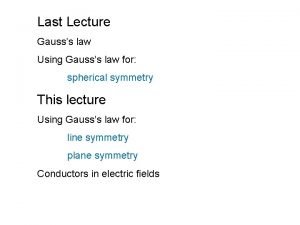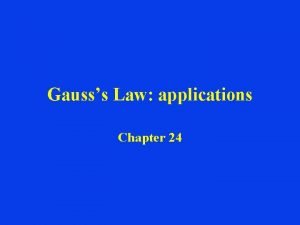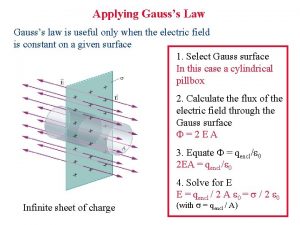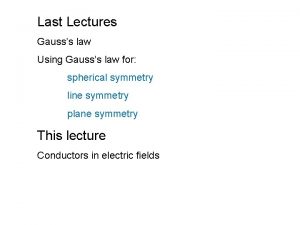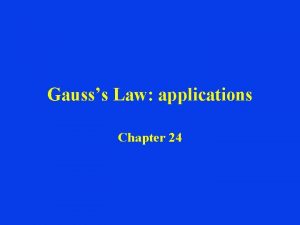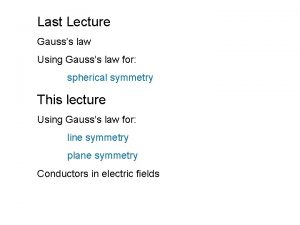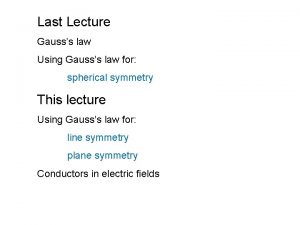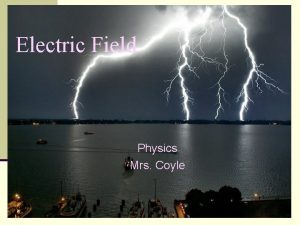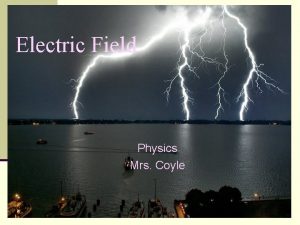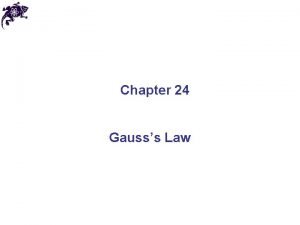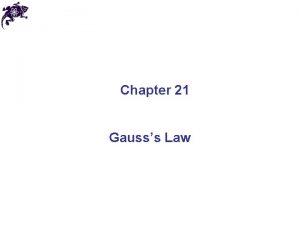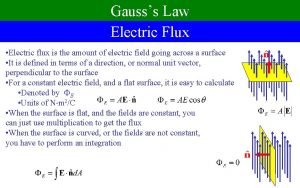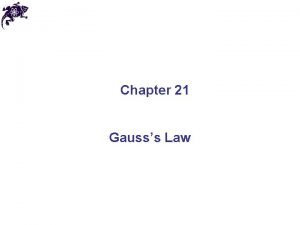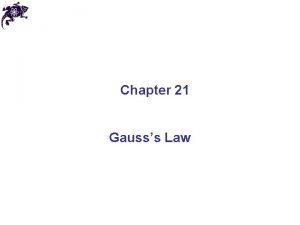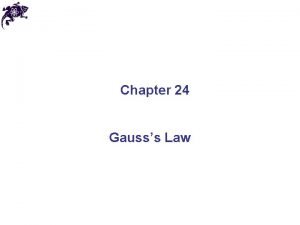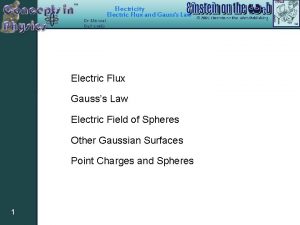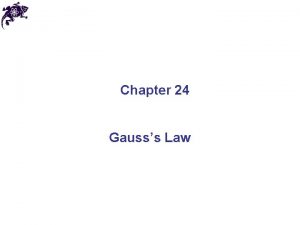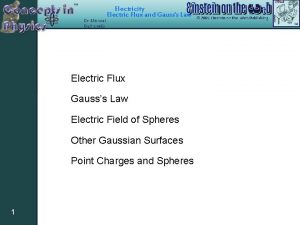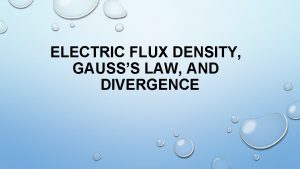Gausss Law AP Physics C Mrs Coyle Electric
























- Slides: 24

Gauss’s Law AP Physics C Mrs. Coyle

Electric Flux, F: The number of electric (flux) field lines which pass through a given cross-sectional area A.

Which has the largest electric flux? Does flux depend on area? Answer: A

Which has the largest electric flux? Does flux depend on direction? Answer: 1

The area vector is perpendicular to the surface A and has a magnitude equal to the area A.

Electric Flux F= Flux is a dot product and therefore a scalar Units: [F ]= [E]= [A]= area m 2 q: angle formed between E and the normal to the surface.

When E is perpendicular to the loop? F= EA Why?

What if you have a closed surface?

For a closed surface:

Gauss’s Law: the total electric flux through a closed surface is proportional to the enclosed charge. Permittivity of free space: ε 0 = 8. 8542 x 10 -12 C 2 / (N m 2)

Remember: Coulomb’s Law constant, k

Note: the dot product

Notes: The “Gaussian” surface can have any shape. You choose the surface. The flux is positive if more electric field lines go out of the surface and negative if more go in. The flux from a particular charge qin is the same regardless of the shape or size of the surface. If the surface contains no charge, the flux through it is zero. That means that every field line that enters the surface will also exit the surface.

More Notes on Gauss’s Law The normal area vector is taken to point from the inside of the closed surface out. Gauss’s Law is also known as Maxwell’s first equation. Gauss’s Law is second way used to find the electric field. What is the first way you learned?

Problem 1 The Electric Field due to a point charge. Prove E=kq/r 2

What do you think would be your answer for E, if you chose a different Gaussian surface?

Problem 2: Show E= σ /(2 ε 0) for a rectangular metal slab positively charged with a uniform surface charge density σ.

Problem 3: Field Due to a Spherically Symmetric Charge Distribution of an Insulator a)Outside the sphere( r>a)

Problem 3: Field Due to a Spherically Symmetric Charge Distribution of an Insulator b)Inside the sphere( r<a) qin < Q and since the volume charge density is uniform:

Problem 3: Field Due to a Spherically Symmetric Charge Distribution (Insulator)

Problem 4: Field Due to a Thin Spherical Shell For r > a, the enclosed charge is Q and E = ke. Q / r 2 For r < a, the charge inside the surface is 0 and E = 0

Problem 5: Field due to a Line of Charge

Problem 5: Field Due to a Line of Charge End view The flux through the ends of the gaussian cylinder is 0. Why?

Problem 5: Field Due to a Line of Charge
 Gausss law
Gausss law Gausss law
Gausss law Gauss law ap physics c
Gauss law ap physics c They are mrs garcia and mrs castro
They are mrs garcia and mrs castro They are mrs garcia and mrs castro
They are mrs garcia and mrs castro Mrs. darling was ___________ of mrs. s.
Mrs. darling was ___________ of mrs. s. Metodo coyle
Metodo coyle Coyle method
Coyle method Coyle method
Coyle method Caitlin coyle
Caitlin coyle Do coyle
Do coyle Coyle bernard
Coyle bernard Coyle
Coyle Coyle health and wellbeing
Coyle health and wellbeing Aaron coyle
Aaron coyle University of nottingham
University of nottingham Dr christine coyle
Dr christine coyle Newton's first law and second law and third law
Newton's first law and second law and third law Si unit of newton's first law
Si unit of newton's first law V=k/p
V=k/p P=k/v
P=k/v Energy electric field equation
Energy electric field equation Electric potential class 12
Electric potential class 12 Electric potential
Electric potential Electric potential from electric field
Electric potential from electric field
